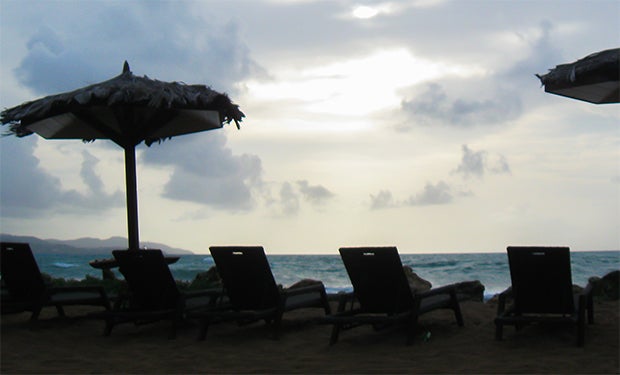Back in the 1960s, the Honourable Lloyd Best and Professor Kari Levitt first put forth the Theory of the Plantation Economy. As Professor Norman Girvan of the University of the West Indies summarised in retrospective notes on the theory, “[Its purpose was] to identify the structural constraints on the growth and transformation of Caribbean economies that arise from the historical legacy of the plantation system.” Fast-forwarding to today, can one say that the prevailing economies in the Caribbean still fit squarely into the model of the Plantation Economy?
 photo by Kamau Joseph
photo by Kamau Joseph
In January of this year, the IDB released Volume 3: Issue 1 of its Caribbean Region Quarterly Bulletin. Two of the main components presented by the authors were: (i) recent economic developments of the Bahamas, Barbados, Guyana, Jamaica, Suriname, and Trinidad and Tobago; (ii) Special Country Reports considering trends in tourism and policy options for the sector. You may have seen the specifics of the latter spelled out in two articles published in the Trinidad and Tobago Business Guardian Newspaper. As it relates to Trinidad and Tobago, the Bulletin’s Special Country Report looked at some of the hard data available with respect to tourism and the policy options that could reveal the country’s potential.


What should the priorities be?
-Define, develop, and market a clear tourism brand
-Develop and enhance the tourism product for the travel and tourism industry
-Deepening linkages within and outside the tourism industry
 photo by Kamau Joseph
photo by Kamau Joseph
If someone were to ask you, “Why visit Trinidad and Tobago?”, what would your answer be? With T&T being a melting pot of cultures, religions and ethnicities from around the world, and having an abundance of natural wonders (the largest brain coral in the Western Hemisphere, the Caroni Bird Sanctuary, the largest natural deposit of asphalt in the world), there are a multitude of answers. Not to mention, the numerous festivities that take place each year such as Carnival, Panorama and Goat Racing to name a few. Nevertheless, it is surprising that unlike some of its neighbours in the region, there isn’t a single UNESCO World Heritage Site to be found within its borders. All the more reason why defining a distinctive and marketable tourism brand is just one of the three priorities recommended in the IDB’s Caribbean Region Quarterly Bulletin. With that being said, what really is Trinidad and Tobago’s tourism brand?


Leave a Reply